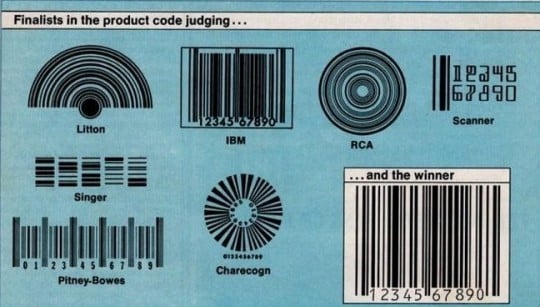The barcode turns 50
April 2023 marks the 50th anniversary of the barcode - an invention that has transformed the way we work and live and is used over 10 billion times a day worldwide.
Today, this remarkably humble symbol is practically omnipresent; found on almost every product we see and touch and impacting almost every aspect of our daily lives. Barcodes are found on not only items that come from supermarkets or retail stores, but boarding passes, checked-in luggage, medical devices, patient wristbands and much more. They have revolutionised our day-to-day – keeping our shelves stocked with products from around the world, helping us find and buy products online, helping the NHS save time, money and lives, and much more.
Despite its ubiquity, the humble barcode has largely been taken for granted and its origins are known even less. In a recent survey by GS1, of those surveyed, just three percent of people could name the creator of the barcode – Norman Joseph Woodland, who drew the worlds first ever barcode in the sand of a Florida beach in 1948. Woodland had worked on the Manhattan Project developing the US military’s first atomic bombs and had a mechanical engineering degree. While at University in Philadelphia, he overheard a grocery-store executive asking an engineering school dean to channel students into research on how product information could be captured at checkout. He then set about developing a code that could symbolically capture details about an item.
Woodland had learned Morse Code as a child while in the Scouts, and one day he drew Morse dots and dashes in the sand as he sat on the beach. He then absent-mindedly left his fingers in the sand, where they traced a series of parallel lines. Then in a moment of inspiration, he had the idea that instead of dots and dashes, he could have thick and thin bars to represent a code, drawing in an instant the first barcode. From there he progressed to creating a circular barcode, similar to a bullseye.
Despite submitting a patent for his idea in 1949, it wasn’t until more than two decades later that lasers made it possible to read the code readily, and the barcode idea could really be developed. In the early 1970s, Woodland worked with a research team at IBM to develop a barcode reading laser scanner, and an IBM colleague George J Laurer turned Woodland’s original idea into the rectangle design seen the world over. And it was on 3rd April 1973 that IBM’s Universal Product Code (UPC) was selected by industry leaders and adopted as standard.


Just over a year later, on June 26th 1974, a packet of Wrigley’s chewing gum sold at a supermarket in Ohio became the first product scanned at a checkout using Laurer’s design. The barcode then crossed the Atlantic, first appearing on a box of Melrose teabags at a supermarket in Lincolnshire in 1979. And the rest, as they say – is history.
Barcodes have undoubtedly been revolutionary, so remember those names for when they inevitably pop up in a pub quiz – Norman Joseph Woodland and George J Laurer.